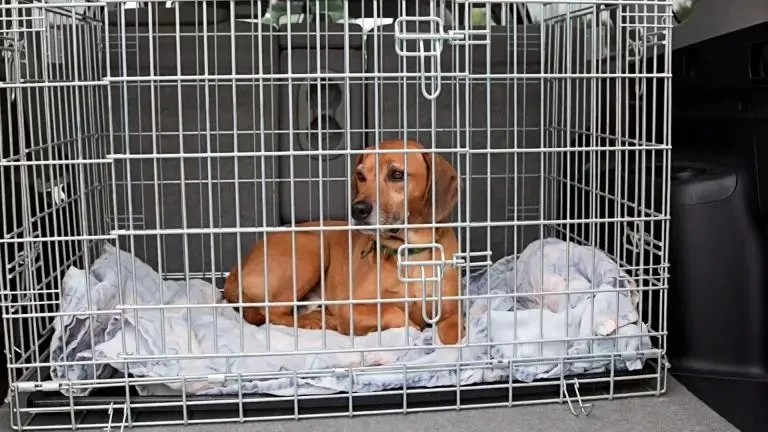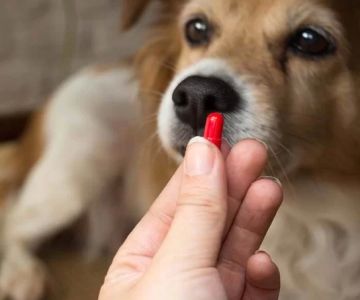Understanding Crate Training and Dog Anxiety
Crate training is an essential part of your dog's education, but it can be challenging, especially when your dog experiences anxiety. Many dogs struggle with crate training, often barking, whining, or becoming overly stressed when placed inside their crate. Understanding the root of this anxiety is the first step in overcoming it and turning crate time into a calm, positive experience for both you and your pet.
Crate anxiety is common in dogs, particularly in puppies or dogs that have experienced past trauma. The key to helping your dog overcome this anxiety is patience, consistency, and the right training techniques. In this article, we will explore practical steps to help calm your anxious dog during crate training, making the process smoother and more enjoyable.
1. Why Dogs Experience Anxiety in Crates
Before we dive into the solutions, it's important to understand why your dog may feel anxious when using the crate. Dogs are creatures of habit, and the crate, while a safe space for many, can feel like a prison for others. Several factors can contribute to crate anxiety, including:
- Separation Anxiety: Dogs are social animals that thrive on companionship. When placed in a crate, especially for long periods, they may experience stress and anxiety due to separation from their owners.
- Negative Past Experiences: If your dog has previously had negative experiences with the crate (e.g., being forced into it or associated with punishment), it may develop a fear of the crate.
- Insufficient Introduction: Some dogs may feel anxious simply because they are not used to being in a confined space. A gradual introduction is key to preventing anxiety.
2. How to Calm Your Anxious Dog During Crate Training
Now that we understand why dogs may experience anxiety during crate training, let’s look at some actionable strategies to help calm your anxious dog.
2.1 Create Positive Associations with the Crate
One of the most effective ways to calm an anxious dog is to create positive associations with the crate. Start by making the crate a welcoming space filled with positive experiences.
- Comfortable Environment: Add soft bedding, blankets, or your dog’s favorite toys to the crate to make it more inviting. You can even place a piece of your clothing inside to comfort your dog with your scent.
- Use Treats: Encourage your dog to enter the crate by offering treats. Place the treat inside the crate and let your dog enter voluntarily. Rewarding your dog for stepping inside will help them associate the crate with positive experiences.
- Meal Time in the Crate: Start feeding your dog their meals inside the crate. This will encourage your dog to see the crate as a place where good things happen, reducing their anxiety.
2.2 Gradual Introduction to the Crate
Introducing your dog to the crate gradually is essential to reducing anxiety. Avoid forcing your dog into the crate, as this can increase their fear. Instead, follow these steps for a gradual introduction:
- Start Slow: Begin by leaving the door open and letting your dog explore the crate on their own. You can place treats or toys inside to encourage exploration.
- Short Sessions: Once your dog is comfortable entering the crate, begin closing the door for short periods of time. Start with just a few seconds and gradually increase the duration as your dog becomes more comfortable.
- Keep it Positive: Always praise your dog when they enter the crate, even if they’re only in there for a short period of time. Positive reinforcement will help them feel safe and secure.
2.3 Use Calming Products
If your dog’s anxiety persists, you may want to consider using calming products to help reduce stress during crate training. These products can provide extra comfort for your dog and help them relax more easily. Some options include:
- Calming Collars: Calming collars release pheromones that mimic the natural scent that mother dogs produce to soothe their puppies. These can be helpful in reducing anxiety during crate time.
- Dog Calming Sprays: There are sprays available that contain calming scents, such as lavender or chamomile, which can help calm your dog when used around the crate.
- Calming Music: Some dogs respond well to calming music designed for pets. Playing soft, soothing music can create a relaxing environment and help your dog feel more at ease in their crate.
2.4 Avoid Punishment
It’s essential never to punish your dog for showing signs of anxiety or for whining in the crate. Punishment will only increase their fear and anxiety, making the crate a more stressful place. Instead, focus on positive reinforcement and patience. Your dog will need time to adjust to the crate, and positive associations will go a long way toward helping them feel comfortable.
3. Additional Tips for a Stress-Free Crate Training Experience
In addition to the methods mentioned above, here are a few more tips to help make crate training a more positive experience for your dog:
- Consistent Routine: Dogs thrive on routine. Try to establish a consistent crate training schedule to help your dog feel secure.
- Exercise Before Crate Time: A tired dog is often a calm dog. Ensure your dog gets plenty of exercise before crate training sessions to help them settle down more easily.
- Never Use the Crate as Punishment: The crate should be a safe, comforting space, not a place for punishment. Always make sure your dog associates it with positive experiences.
With patience and the right techniques, your dog can learn to feel safe and comfortable in their crate. Crate training is an invaluable tool for both you and your pet, providing them with a personal space to relax and giving you peace of mind when you need to leave them alone. If you need more help with training or managing your dog’s behavior, visit Hidden Brook Veterinary for expert guidance and support.










